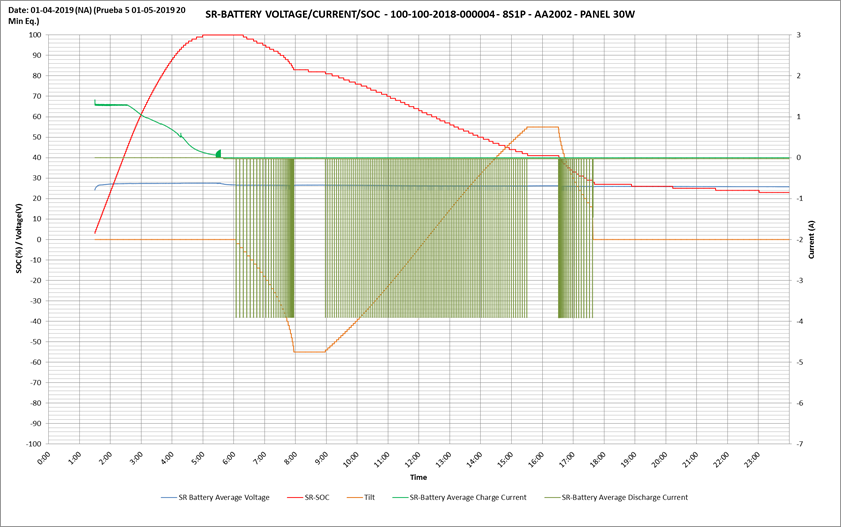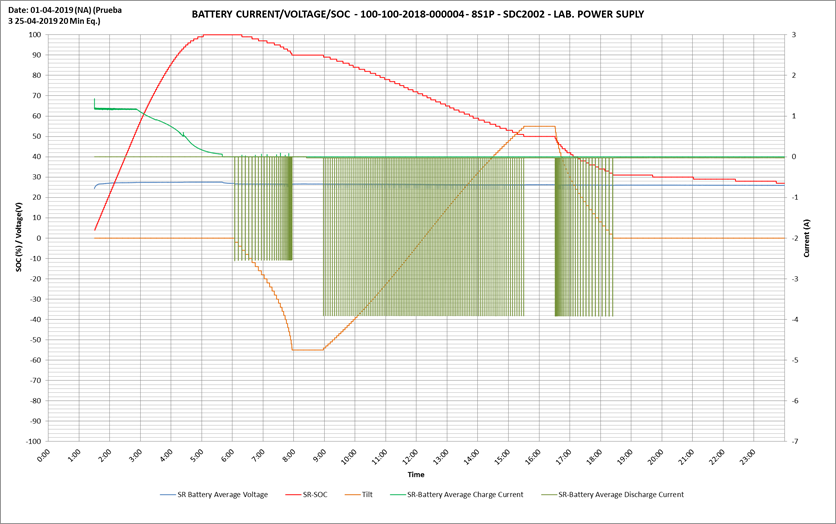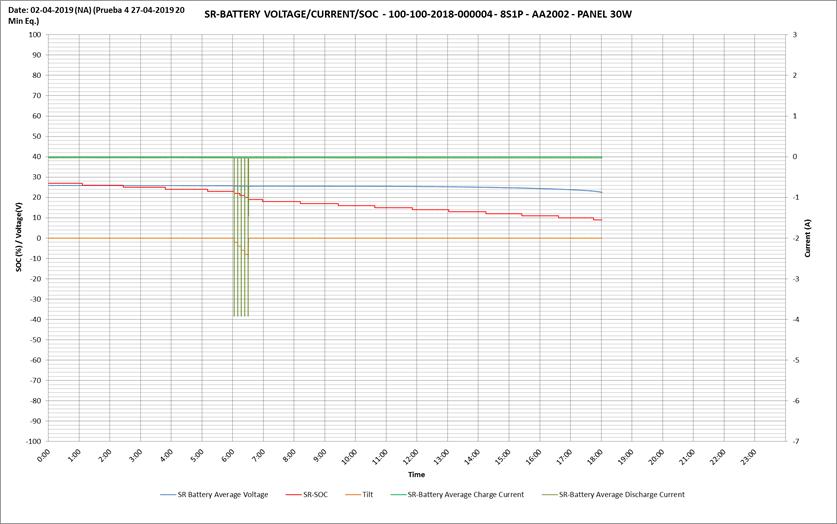Hi,
I am using a BQ34z100-g1 with an 8s2p LiFePO4 batteries. The nominal capacity of the battery is 3200mAh.
I have obtained the golden image of the battery and load it in the bq34z100-g1.
Now I am doing cycles to the system simulating the real application.
It can be seen in green the current through the battery when the motor runs. It can be also seen how SoC (in red) decreases more rapidly when the motor is moved and it decreases in a slower way when teh system is in standby.
However, after the nigth comes (about 6pm: 18h) the motor is not driven any more and the SoC continue decreasing slowly.
However it can be seen a jump on the SoC around 11.30h-11.40h. (pointed in the graph below)
This SoC jump is a jump of 5% and take place after more than 18 hours of relaxation of the system.
- Which may be the cause of that jump?
Best regards,





